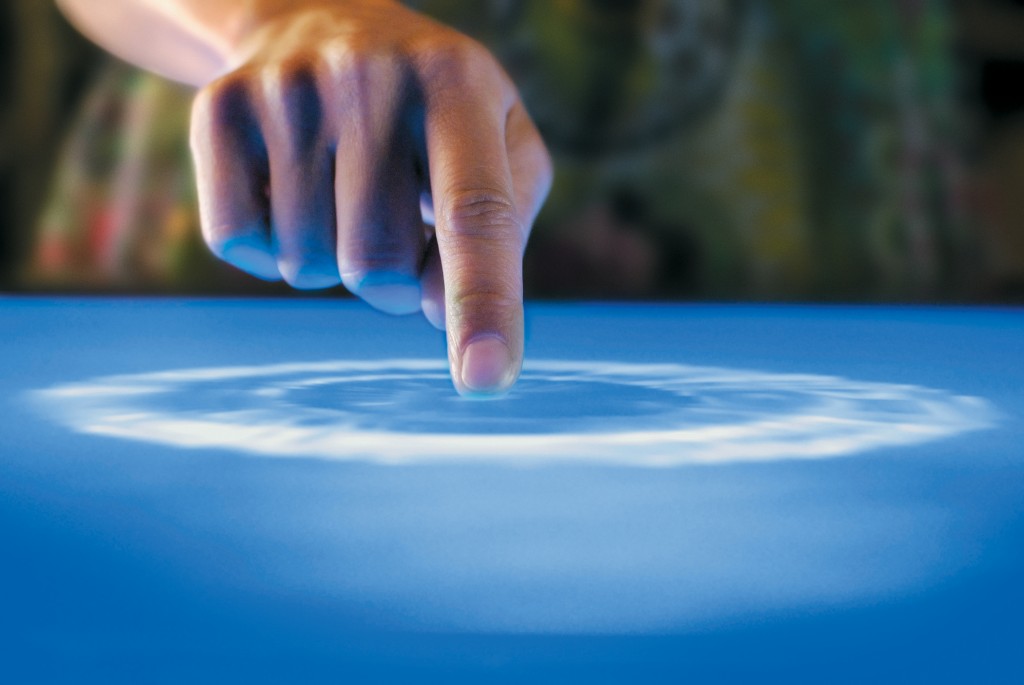
Microsoft Surface is a multi-touch surface computing platform that responds to natural hand gestures and real objects. It creates a simple and user friendly interface between user and digital content. It has a 360-degree user interface, a 30 in (76 cm) reflective surface with a XGA DLP projector underneath the surface which projects an image onto its underside, while five cameras in the machine’s housing record reflections of infrared light from objects and human fingertips on the surface. Surface has been optimized to respond to 52 touches at a time. With this large user interface Surface offers enables multiple users to use the platform collaboratively and simultaneously. Users can interact with the machine by touching or dragging their fingertips and objects such as paintbrushes across the screen, or by placing and moving placed objects.
The technology of Microsoft surface allows non-digital objects to be used as input devices. A normal paint brush can be used to create a digital painting in the software. This is made possible by the fact that, in using cameras for input, the system does not rely on restrictive properties required of conventional touchscreen or touchpad devices such as the capacitance, electrical resistance, or temperature of the tool used.
Surface will ship with basic applications, including photos, music, virtual concierge, and games, that can be customized for the customers.
A unique and amazing feature that comes preinstalled with Surface is the pond effect “Attract” application. Simply, it is a “picture” of water with leaves and rocks within it. By touching the screen, users can create ripples in the water, much like a real stream. Additionally, the pressure of touch alters the size of the ripple created, and objects placed into the water create a barrier that ripples bounce off, just as they would in real life. These apps for Surface are written using either Windows Presentation Foundation or Microsoft XNA
Microsoft launched Surface 1.0 in 2008, in cooperation with a most of retail partners to build up their technology as a product. With the January 2011 announcement of the Samsung SUR40 and Surface 2.0, Microsoft seemed ready to make the Surface platform available for a much wider audience.